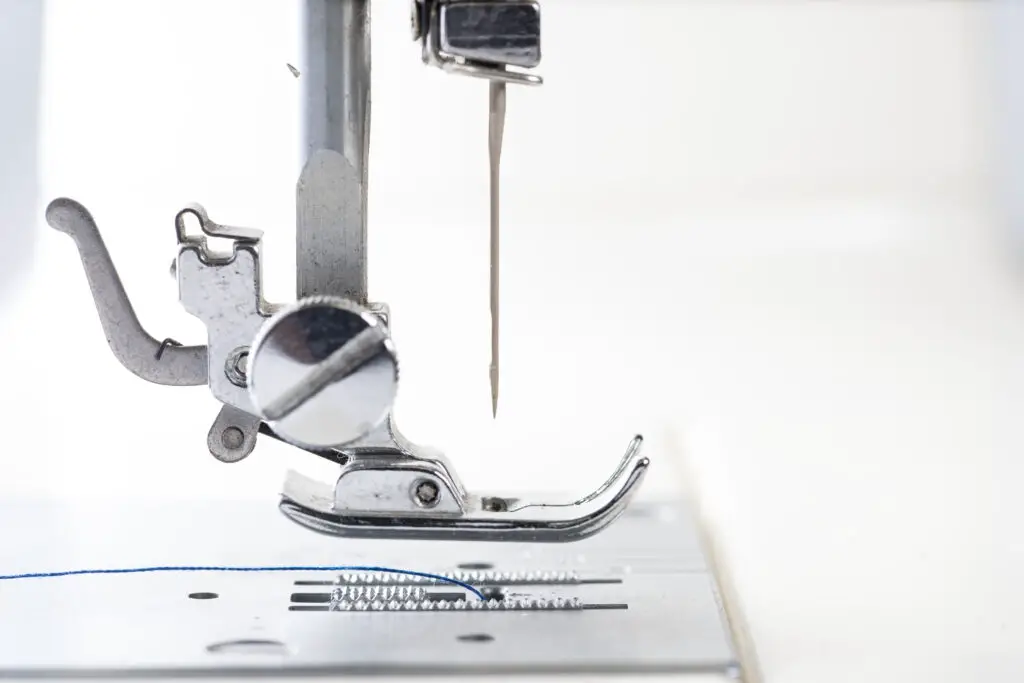
Choosing the right needle for your sewing project is essential. Get it wrong and the result will be more than just disappointing. Here is a quick lowdown on the different needles you need for the job.
Know-How
Choosing the right needle is a daunting prospect. At first glance they all look the same – how are you supposed to work out the right one? The problem is that making a mistake is a potential disaster. Who would want to deal with ruined seams holey fabrics and worst of all, a ruined sewing machine as well? Here are some rules to prevent this from happening:
Rule 1 – Check the machine
Always, always, always check your machine first. Are there specific needles that this machine uses? Undertaking this preliminary piece of research will help you determine which needles are going to fit your machine.
When you go shopping always keep a note of your model number and make so you can ensure needle compatibility. Ask the shop assistants if you need any guidance and let them know these details – this simple precaution will prevent any machine meltdown!
Rule 2 – Buy the best
Do not be lulled into a false sense of security by picking up a bunch of cheap needles. They might seem like a good idea at the cash register but the cheaper varieties rarely last. The points are not always sharp or precise and they are often subject to breaking. If you are getting lots of skipped stitches, don’t blame your technique; it’s probably your needles that are to blame! A good needle will provide you with at least 8-10 hours of happy sewing time!
Rule 3 – Know the basics
All needles have a number and this dictates their size and thickness. Don’t be alarmed when comparing European and American needle sizes. They are different and the numbers may not seem to correlate but they do – the higher the number the thicker the diameter of the right shaft above the eye. In Europe, the sizes range from 60 to 120. In America it is generally 8 to 19. In practice this means that a 60/8 needle will be the thinness and smallest, ideal for sewing sheer and delicate fabrics. In contrast the 120/19 will be perfect for sewing heavyweight fabrics like denims.![]()
Rule 4 – Think about your fabric
It is worth going into some detail here – fabric determines the type of needle you will eventually use. Here are some needle rules that you must know:
The universal needle – The universal is a safe choice and a sewers best friend! Most fabrics will work with it – you can use it on simple materials like cotton as well as with denim. Look for a long needle with a slightly rounded point.
The sharp needle –Easy to identify in your sewing box, the sharp needle has a very fine point. It is the one to use for silks and in cases where you need to be super-precise.
The ballpoint needle –If you are putting together knitted clothing or making items from stretchy, lycra-based materials you need a ballpoint needle. As it suggests, it has a rounded point. The idea with these fabrics is that the needle should penetrate between the fibres, rather than sharply piercing through them. A ballpoint needle allows you to create a smooth stitch.
The leather needle –Leather has a needle all of its own. The point is slightly angled to allow it to travel through this tough material.
The triple needle – Great for pin tucking and decorative stitching, the triple needle has a cross bar at the top and three needles beneath it. It is an incredibly powerful needle – imagine being able to stitch three rows of different coloured threat in one swoop? Do make sure that the throat plate of your sewing machine can accommodate this needle though – not all of them do – otherwise you well end up with one big complicated mess.
Rule 5 – Thread the Needle
Okay, so you think you have matched the needle to your fabric, but before you embark on the sewing project, don’t forget about the thread you have chosen!
It’s important that the thread pulls through the needle’s eye with some ease – it should be a snug fit but not an impossible one. If it is difficult to get through and it feels tight, you will end up with difficult to manage stitches.
Always do a dry run with your three key ingredients – the needle, the fabric and the thread. Get a scrap of the selected fabric and check the precision of your stitching. Would you be happy for this to be displayed in public? If you would move on to the main show!
Conclusion
Don’t be overwhelmed by all this talk of different needles. Your sewing machine probably came with a few standard ones. It is only those complicated and ambitious projects that require various different types and sizes. In most cases you will be safe and satisfied by a Universal needle. Buy it in a few different sizes and you will be ready to take on most projects!
